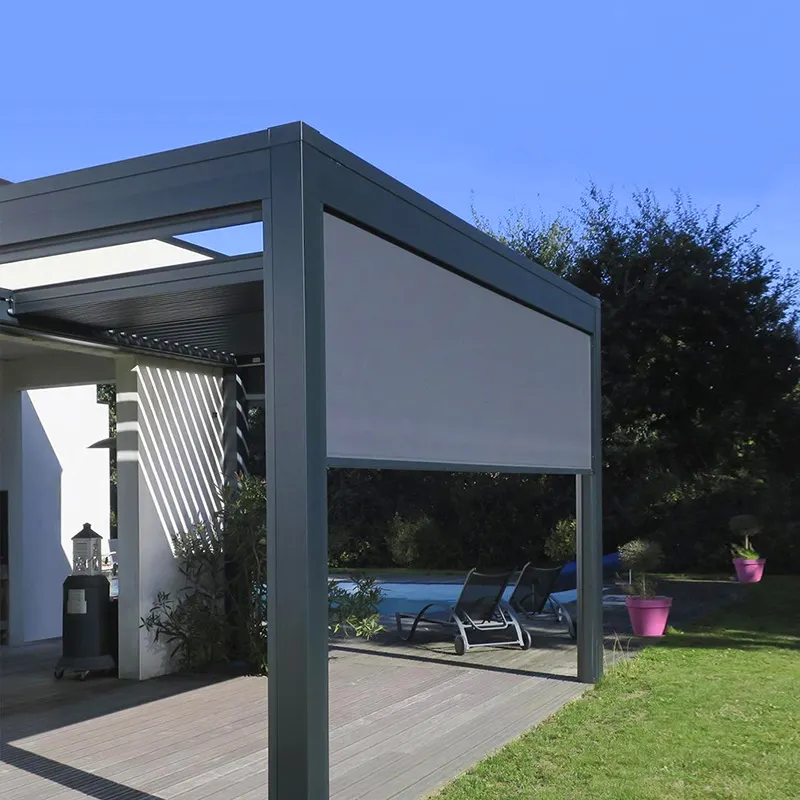Introduction
Outdoor roller shades are essential for providing shade, UV protection, and wind resistance in various settings, including patios, restaurants, and residential spaces. A high-quality windproof roller shade must combine durability, functionality, and aesthetic appeal while withstanding harsh weather conditions.
This comprehensive guide explores the materials, mechanisms, installation techniques, and maintenance practices required to produce a superior wind-resistant roller shade. Whether you're a manufacturer, installer, or DIY enthusiast, this article will help you achieve professional-grade results.
---

1. Understanding Windproof Roller Shade Requirements
Before manufacturing, it's crucial to understand the key factors that determine a shade’s wind resistance:
- Wind Load Resistance – The fabric and structure must endure strong gusts without tearing or deforming.
- Material Durability – The fabric should resist UV degradation, moisture, and mildew.
- Mechanical Stability – The rolling mechanism must remain smooth under tension.
- Secure Installation – Proper anchoring prevents detachment in high winds.
---
2. Selecting the Right Fabric for Windproof Shades
The fabric is the most critical component. The best options include:
A. Solution-Dyed Acrylic
- Pros: UV-resistant, breathable, mildew-proof, and available in various colors.
- Cons: Less rigid than PVC, requiring additional reinforcement for high winds.
B. PVC-Coated Polyester
- Pros: High tensile strength, waterproof, and excellent wind resistance.
- Cons: Heavier than acrylic, may retain heat.
C. HDPE (High-Density Polyethylene) Mesh
- Pros: Allows wind to pass through while providing shade, reducing wind load.
- Cons: Less privacy, not fully waterproof.
D. Reinforced Vinyl with Woven Fiberglass
- Pros: Extremely strong, ideal for hurricane-prone areas.
- Cons: Less flexible, may yellow over time.
Recommendation: For maximum wind resistance, PVC-coated polyester or reinforced vinyl is ideal.
---
3. Choosing the Right Roller Mechanism
A sturdy rolling system ensures smooth operation and longevity. Key components include:
A. Heavy-Duty Aluminum or Stainless Steel Tube
- Provides structural support; prevents bending under wind pressure.
B. Spring vs. Motorized Operation
- Spring-Loaded: Cost-effective but requires manual adjustment.
- Motorized: Offers remote control, better tension control, and automatic retraction in high winds (with sensors).
C. Side Channels or Guide Rails
- Prevents fabric flapping, improving wind resistance.
D. Wind Sensors (Optional for Motorized Shades)
- Automatically retracts the shade when wind speeds exceed a safe threshold.
---
4. Reinforcements for Maximum Wind Resistance
To enhance durability, consider:
A. Hem Bar with Weighted Bottom
- A heavy-duty aluminum or steel hem bar adds tension, preventing billowing.
B. Reinforced Stitching & Welded Seams
- Double-stitched or heat-welded seams prevent unraveling.
C. Grommet or Loop-and-Hook Fastening
- Secures the shade to the ground or railing in extreme winds.
D. Cross-Bracing for Large Shades
- For extra-wide installations, lateral support bars reduce swaying.
---
5. Proper Installation Techniques
Even the best shade will fail if improperly installed. Follow these steps:
A. Mounting Surface Strength
- Use structural anchors (e.g., concrete bolts, heavy-duty wall brackets).
- Avoid mounting on weak materials like hollow aluminum.
B. Optimal Pitch & Tension
- A slight downward angle (5-10°) helps rainwater runoff.
- Ensure fabric is taut but not overstretched.
C. Wind Deflectors (For Rooftop Installations)
- Redirects wind upward, reducing pressure on the shade.
---
6. Maintenance for Longevity
To extend lifespan:
- Clean fabric with mild soap and water (avoid harsh chemicals).
- Lubricate rolling mechanisms annually.
- Inspect anchors and seams before storm seasons.
---
Conclusion
A high-quality windproof roller shade requires:
✔ Durable, wind-resistant fabric (PVC-coated polyester or reinforced vinyl).
✔ Sturdy rolling mechanism (motorized with wind sensors for best results).
✔ Reinforcements (hem bar, side channels, cross-bracing).
✔ Professional installation (strong anchors, proper tensioning).
By following these guidelines, you can produce a shade that withstands harsh weather while maintaining aesthetic appeal.
---
Q&A Section
Q1: What is the best fabric for extreme wind conditions?
A: Reinforced vinyl with fiberglass or PVC-coated polyester offers the highest wind resistance.
Q2: Can roller shades withstand hurricane-force winds?
A: Only if reinforced with cross-bracing, heavy-duty anchors, and automatic retraction systems.
Q3: How often should I inspect my outdoor roller shade?
A: Check every 3-6 months, especially before storm seasons.
Q4: Do motorized shades last longer than manual ones?
A: Yes, because they retract automatically in high winds, reducing wear.
Q5: Can I install a windproof roller shade on a wooden pergola?
A: Yes, but reinforce the structure with steel brackets for added strength.